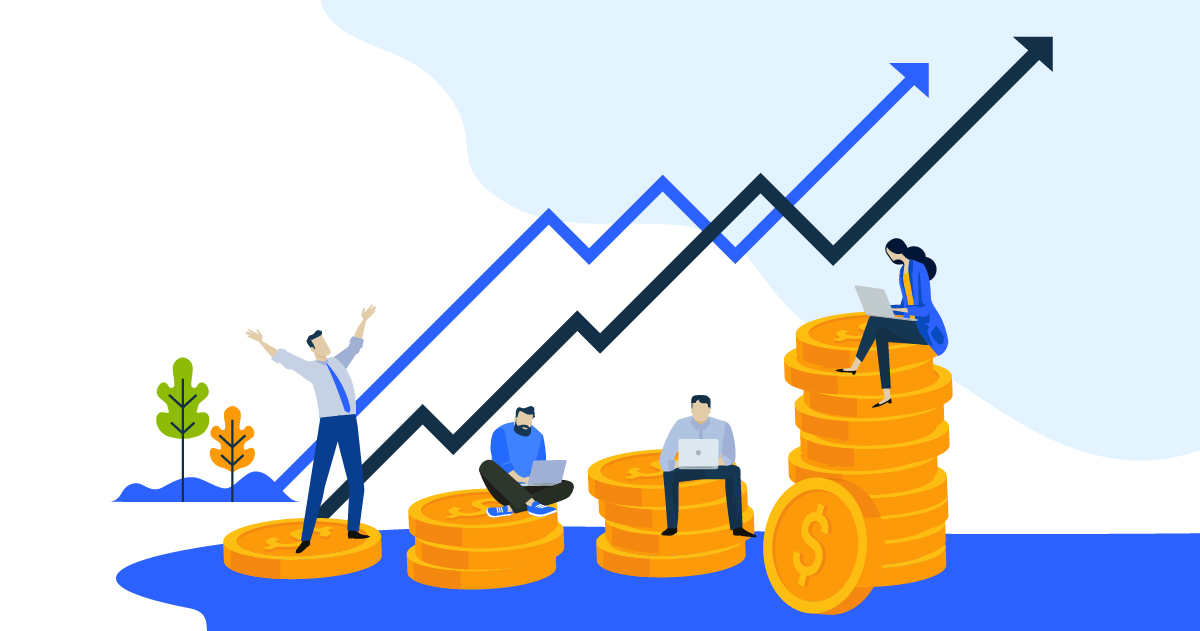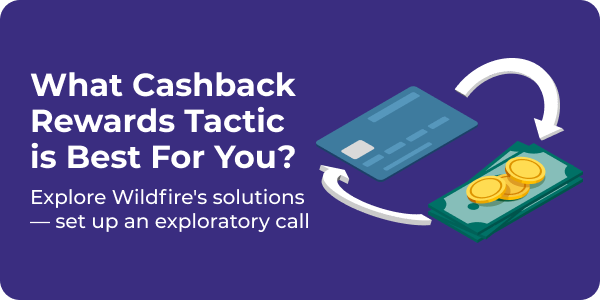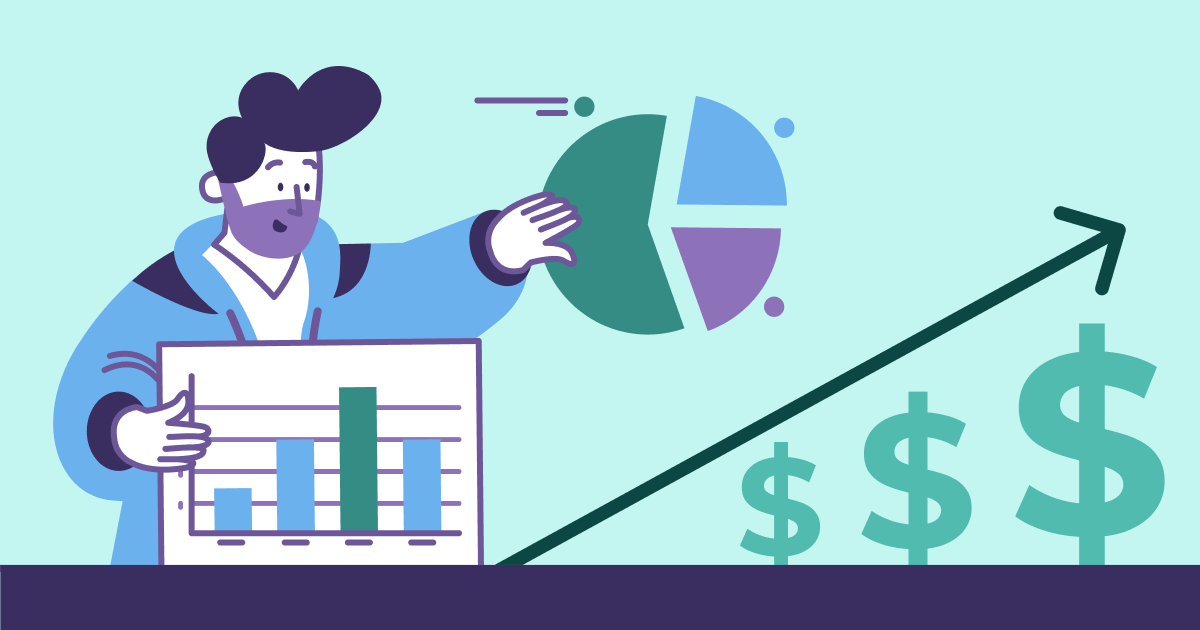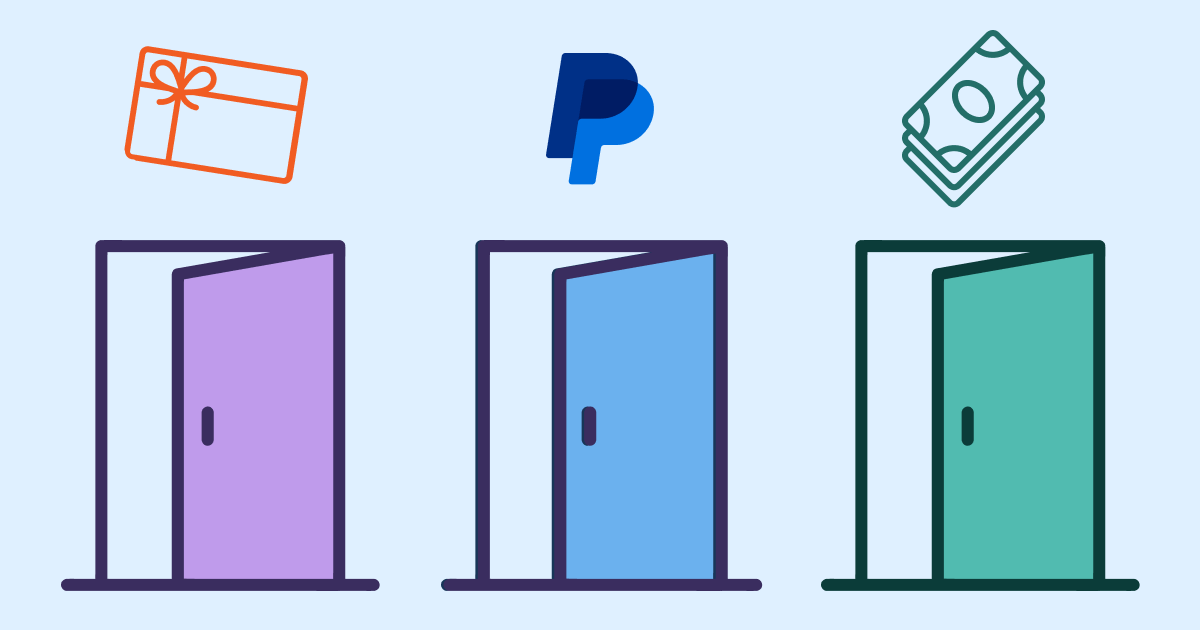Many businesses have identified the need to diversify where their revenue is coming from. Increasing customer lifetime value is a core objective of many digital-first businesses including app developers and website publishers. Advertising and subscription revenue can be unreliable, so supplementing the sources of a business' revenue is critical.
Financial institutions and banks too are looking for ways to shore up their revenue sources, as their fee revenue declines while they try to keep up with digital-first banks' aggressive customer acquisition strategies featuring low- or no-fee accounts.
The solution to diversifying your revenue streams and generating critical incremental revenue is, in part, through cashback loyalty programs, funded by online merchants’ marketing budgets.
Wait, how do merchants fund cashback loyalty programs?
Cashback paid to customers as rewards for their online shopping comes from an evolution of the affiliate marketing business model. In the traditional affiliate marketing model, online retailers pay a commission or percentage of a completed sale, back to the source that originally referred the customer. This is commonly known as revenue sharing, or "revshare."
For example, let’s say the fictional bike-review website "My Mountain Bikes" writes an article comparing mountain bike seats. The article would include tracking links out to the reviewed seats. If a reader clicks on one of the products and ends up buying it, My Mountain Bikes would receive a commission on that purchase as the buyer’s referrer.
In effect, affiliate marketing is built on a retailer paying referrer commissions or rev shares from actual sales, and not on an advertising model, where the retailer pays for "eyeballs" or "clicks" to their site.
Cashback loyalty programs take this pricing model a step further by capturing the retailer commissions their customers generate by clicking through and making e-commerce purchases, and THEN paying back those customers some or all of the retailer’s revshare.
For example, a customer might use a browser extension from Honey, or from our partner Acorns, to activate cashback on an eligible retailer’s site by clicking the button in the extension.
When that customer completes an e-commerce purchase, the retailer pays the source of the click, or the referring company, (e.g. Honey, or Acorns, or your business, etc.) the revshare. Then, the referring company can keep some of that rev share for itself and distribute the rest of it (or give all of it) to their customer in the form of cashback, points, cryptocurrency, or their proprietary reward currency.
An illustration of how merchant-funded commissions (revshare) can power a cashback program for your users.
Why e-commerce cashback rewards simply work
Rewarding customers with cashback rewards on e-commerce purchases has benefits for each of the entities involved in the cashback rewards ecosystem:
- The customer captures additional savings and/or cashback for purchases they are already making
- The retailer protects their budget by paying a commission to the referrer for a successful sale, and not simply for views of an ad or visits to a site
- The referring business enjoys an incremental revenue stream from the revshare they earn for driving their customers to an online retailer’s site
Of course, #3 is of the utmost concern to any business looking to diversify its revenue streams. E-commerce rewards, deployed in this way, are an easy win because they offer significant value to the customer, but also allow your business to take advantage of existing customer activity (buying things online) and passively capture a part of your customers’ online purchases in the form of the retailer-paid commission.
How your business can deploy e-commerce cashback rewards
Businesses have many options by which they can act as the "referrer" for their customers’ e-commerce purchases. One of the most popular implementations that can enable this mechanism is by offering a browser extension.
Browser extensions
When installed, the browser extension alerts the customer of any available cashback when they visit online retail sites. (Notably, there’s a lot of technology behind the browser extension, but in short, it detects whether a site has an affiliate program and is paying referrers any commissions, and then displays what the possible cashback is for the end-user customer.)
Example from our partner Acorns’ Chrome browser extension.
The customer then simply has to click to activate their cashback, so that when they make their purchase, it can be tracked back to your business as the referrer (aka the owner of the browser extension). The commission is paid to your business and in turn part or all of that can be paid back to your customer in cashback rewards.
Digital Coupons
Customers love getting a deal - in fact, recent statistics show that 92% of people are "always" looking for a deal when they shop online! Another way to capture the click to online retailers so your company can earn commissions from referring customers, is to create a digital coupon showcase.
Your business can build a centralized deal site where customers can see the hottest and most valuable deals being offered by e-commerce sites.
As with the browser extension description, significant technology is behind any digital coupon site. You can’t just build it, then "set it and forget it." Retailers' coupons and deals update / expire regularly. Offering a stale coupon that a customer was expecting to use results in a poor user experience, plus it reflects badly on your company because you gave them inaccurate coupon info.
Thus, it's critical to find a source of coupons that is accurate and constantly kept updated; as well, the clicks for each coupon must be part of an affiliate program and must accurately track back to your business so you can ultimately capture the retailer’s commissions from referred clicks.
Shopping Portals
 Along the same lines of offering a digital coupon showcase for customers, your business can also create a "Shopping Portal" or shopping site, in which select merchants offering cashback are displayed for your customers all in one place. If you have a password-protected login, an "offer wall" like this can offer a curated shopping experience for customers within their account and give them a cue for where to start their shopping journey with a cashback offer in hand.
Along the same lines of offering a digital coupon showcase for customers, your business can also create a "Shopping Portal" or shopping site, in which select merchants offering cashback are displayed for your customers all in one place. If you have a password-protected login, an "offer wall" like this can offer a curated shopping experience for customers within their account and give them a cue for where to start their shopping journey with a cashback offer in hand.
Your business can merchandise which offers the customer sees to be timely and relevant(for example, maybe Valentine’s Day is approaching, so your offer wall can feature e-commerce sites heavy on "traditional" v-day gifts like chocolate or flowers.)
For a more technical and advanced approach, if your business has access to customers’ historical purchases, you could choose to programmatically display only the merchant categories different customers typically shop from. (Obviously, this requires a little more engineering effort on your part than a generic, one-size-fits-all portal, but it’s not impossible.)
Again, significant technology exists behind any "shopping portal," so that any featured merchants must actually have cashback available (e.g. offer an affiliate program), and links can be tracked back to the referring business to capture any commissions from resulting sales. If you want to capture that click and receive attribution (and commissions!) for all of your customers’ referred sales, it’s imperative to work with a platform that can power a shopping site with updated cashback/deal information and accurate tracking.
The Incremental Revenue Opportunity
Because the commissions from customers’ e-commerce purchases are paid for out of the online retailers' affiliate marketing budgets, the revenue generated from a cashback loyalty program is almost 100% incremental to you as the program's "sponsor."
Aside from some amount of internal development resources and customer support, plus the marketing lift required to promote the program to your customers, your cashback program becomes a source of fairly passive income when your customers start actively participating.
Once a critical mass of your customer base installs and uses the extension, and/or the shopping site or coupon page, regularly as they make their online purchases, the program becomes a completely new revenue source for your business, capitalizing on the e-commerce purchases your customers are already making every day.







